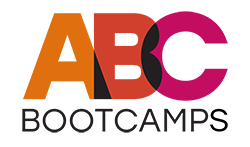The future doesn’t reward people who remain stagnant. It favors those who can adapt quickly, think creatively, and actually turn ideas into action. That’s what personal innovation fitness is all about.
Just as physical fitness builds strength and endurance, innovative fitness helps you handle change, spark new ideas, and make them work in real life. It’s essentially mindset plus skillset. The mindset is shaped by curiosity, resilience, and openness to whatever change brings. The skillset side is about having the tools to turn good ideas into something real. Put the two together, and you’ve got the foundation for personal growth, career wins, and long-term adaptability.
The Value of Innovation in Personal and Professional Growth
Innovation is not just limited to launching new products, flashy tech, or billion-dollar startups. On a personal level, it means stretching beyond your comfort zone, solving problems in fresh ways, and grabbing opportunities others might miss. Professionally, it drives adaptability, leadership, and long-term success in fast-moving industries.
Why do people innovate? They innovate because of a mix of internal and external motivators. The inner ones include curiosity, passion, and fulfillment. The outer ones often involve career progression, organizational demands, or the challenge of change. Both forces matter. Internal drivers keep you engaged and purposeful, while external ones push you to deliver results in real-world settings. Together, they create the fuel that keeps innovation from being a one-time spark and turns it into a lifelong practice.

Personal Innovation Fitness Models
Before you can build innovation strength, you need to know where you’re starting from. That’s where models and frameworks come in handy. These tools highlight your natural tendencies and give you a roadmap for growth.
Follow these models:
- Kirton’s Adaption-Innovation Inventory (KAI): It measures whether a person prefers structured, rule-based problem-solving (adaptive) or more disruptive, unconventional approaches (innovative). It allows people and groups to recognize their natural ways of thinking, making it easier to work together and spark new ideas.
- FourSight Thinking Profile: It identifies an individual’s preferred thinking style across four stages of creativity: Clarify, Ideate, Develop, and Implement. It helps people understand how they approach problem-solving and collaborate more effectively.
- Design Thinking Self-Assessment: With it, individuals evaluate their strengths and gaps in applying design thinking mindsets and methods. It provides insights into creativity, empathy, problem-solving, and collaboration skills to guide personal growth.
- Innovator DNA Framework: It checks five key skills: associating, questioning, observing, networking, and experimenting. These all drive creative thinking and innovation. By assessing these, people and organizations gain insight into how to strengthen their ability to generate bold, breakthrough ideas.
These models don’t label you as “good” or “bad” at innovating. Instead, they reveal strengths and gaps so that you can improve your mindset and skillset.

Goal Setting & Action Planning
Your first step is to understand your strengths. Turning them into results requires an action plan. Without structure, even the best ideas stay stuck on sticky notes or whiteboards. Frameworks for goal setting ensure that innovation becomes a practice, not just a burst of inspiration.
Some effective tools include:
- SMART Goals: This framework is about clear objectives that are specific, measurable, achievable, relevant, and time-bound, ensuring focus and accountability. They turn vague intentions into actionable steps with a clear deadline for success.
- OKRs (Objectives and Key Results): Widely used in organizations, this framework where Objectives define what you want to achieve, and Key Results measure how you’ll achieve it. They guide teams toward common goals and monitor achievement.
- WOOP (Wish, Outcome, Obstacle, Plan): It’s a practical mental strategy for achieving goals by identifying your Wish, visualizing the best Outcome, recognizing potential Obstacles, and creating a concrete Plan to overcome them. It turns dreams into actionable steps.
These planning tools with self-awareness from innovation models can bridge the gap between where you are today and where you want to be.

In short
Personal innovation fitness is not about becoming a creative genius instantly. It’s about building the habits, mindset, and tools that allow you to thrive in an unpredictable world. With curiosity as your driver, resilience as your safety net, and practical skillsets as your toolkit, you’ll be prepared to turn challenges into opportunities and ideas into impact.




